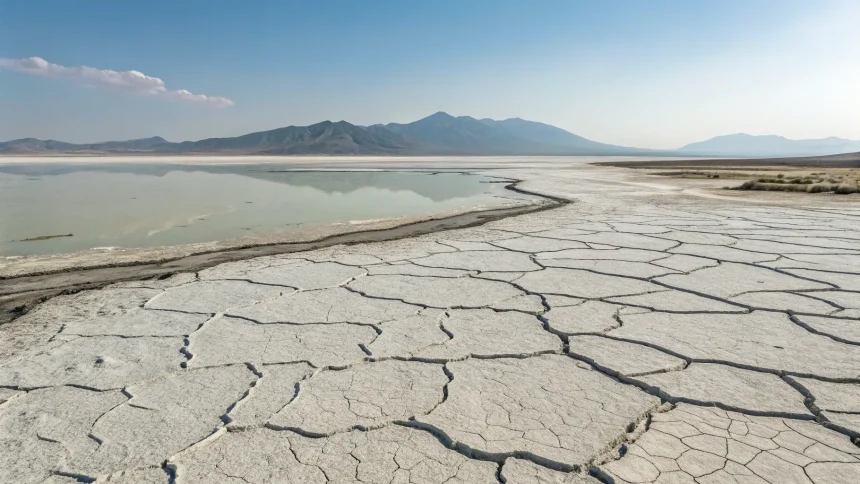Lake Urmia, once the largest lake in the Middle East, has shrunk to unprecedented low levels and now faces the possibility of complete disappearance as Iran grapples with an intensifying water crisis. Environmental experts warn that the lake’s rapid decline represents one of the most visible symptoms of the country’s broader water management challenges.
A Lake in Peril
Recent measurements show Lake Urmia has reached its smallest recorded size in history. The salt lake, located in northwestern Iran between the provinces of East and West Azerbaijan, has lost more than 90% of its original surface area over the past three decades.
The lake’s water levels have dropped so dramatically that vast expanses of the former lakebed are now exposed, creating salt flats that stretch for miles. Satellite imagery confirms the steady retreat of shorelines, with some areas completely dry where boats once sailed.
“The situation at Lake Urmia has deteriorated beyond what many thought possible,” said an environmental researcher familiar with the region. “What we’re witnessing is the potential death of an ecosystem that once supported unique wildlife and provided livelihoods for local communities.”
Causes of the Crisis
Multiple factors have contributed to Lake Urmia’s decline:
- Excessive dam construction on rivers feeding the lake
- Unsustainable agricultural practices and water extraction
- Prolonged drought conditions linked to climate change
- Inefficient water management policies
The agricultural sector, which consumes approximately 90% of Iran’s water resources, has expanded significantly in the Lake Urmia basin. Thousands of legal and illegal wells draw groundwater that would otherwise feed the lake, while numerous dams built on tributary rivers have drastically reduced inflow.
Environmental and Social Impacts
The ecological consequences of Lake Urmia’s disappearance extend far beyond the loss of a natural landmark. The lake once served as critical habitat for flamingos, pelicans, and other migratory birds. Its unique ecosystem supported specialized organisms adapted to its hypersaline conditions.
For local communities, the lake’s decline has brought economic hardship. Tourism has collapsed, and agriculture faces increasing challenges as salt storms from the exposed lakebed contaminate farmland and damage crops.
“When the winds blow across the dry lakebed, they carry salt particles that destroy agricultural land and create health problems for residents,” explained a local environmental activist. “People who once made their living from the lake now watch helplessly as their way of life disappears.”
Iran’s Broader Water Crisis
Lake Urmia’s plight reflects Iran’s nationwide water emergency. The country faces severe water stress, with demand outstripping available resources in many regions. Experts point to a combination of population growth, agricultural expansion, industrialization, and climate change as driving factors.
Several other major lakes and wetlands across Iran have also experienced significant shrinkage. Groundwater levels have plummeted in many areas, leading to land subsidence in cities like Tehran.
The water crisis has sparked protests in affected regions, with citizens demanding action from authorities to address water shortages and mismanagement.
Restoration Efforts and Future Outlook
Despite previous restoration initiatives, including a national project launched in 2013 with a budget of several billion dollars, Lake Urmia continues to decline. Some limited water transfers and periodic rainfall have occasionally increased water levels temporarily, but the long-term trend remains negative.
Environmental scientists stress that saving Lake Urmia would require fundamental changes to water management across the entire basin, including reduced agricultural water use, removal of some dams, and stricter groundwater extraction controls.
Without immediate and comprehensive action, Lake Urmia may join the ranks of disappeared lakes like the Aral Sea, leaving behind only a salt desert and a cautionary tale about the consequences of unsustainable water management in an era of climate change.









